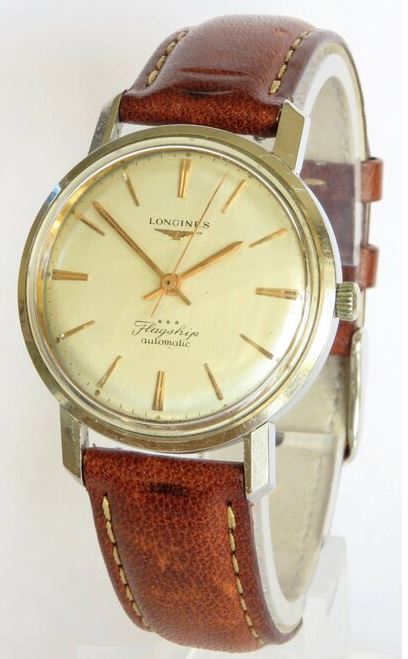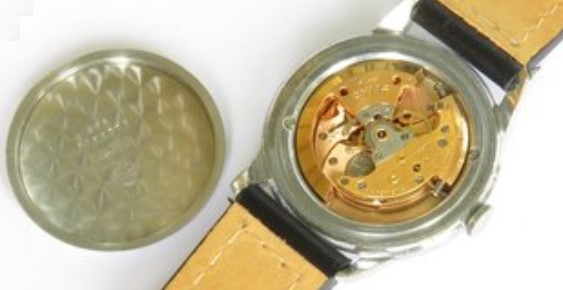In this post, we will explore vintage watch terminology. These are terms beginners may find confusing when collecting vintage watches. These terms cover a range of important aspects, from traditional regulatory systems like the pinned regulator, which helps adjust the watch’s timing, to advanced features like the Incabloc system, which protects watches from shocks. It also includes key components, mechanisms, and concepts in mechanical watchmaking. I will add to the list over time. If any additional terms should be added or explained, please list them in the comment section below.
Pinned regulator (or index regulator)
The pinned regulator, also known as the index regulator, is one of the most traditional and widely used regulator mechanisms in mechanical watches. This mechanism operates by adjusting the effective length of the hairspring, which in turn influences the rate at which the balance wheel oscillates. By fine-tuning the position of the index along a scale, a watchmaker can adjust the watch’s timing to run faster or slower (Index regulator at Horopedia).
This system’s simplicity and effectiveness have made it a standard feature in pocket watches and entry-level wristwatches. The index pointer can be moved slightly to either increase or decrease the active length of the hairspring. A longer effective hairspring causes the balance wheel to oscillate more slowly, making the watch run slower, while a shorter effective hairspring speeds up the oscillations, making the watch run faster.
The reliability of this system, combined with its ease of adjustment, has helped ensure its continued use for decades. While more sophisticated regulation systems exist today, the pinned regulator remains a staple in the world of affordable, yet highly functional, mechanical timepieces.
Incabloc
One of the most significant developments in the world of horology is the Incabloc system, a shock protection mechanism developed in Switzerland during the 1930s. The system was created to solve a critical problem in mechanical watches, the vulnerability of the balance staff pivots to damage from sudden impacts. Watchmakers had long sought a way to protect these delicate parts, and the Incabloc system provided a solution that has stood the test of time.
The Incabloc system is composed of lyre-shaped spring clips that hold the ruby jewel setting, allowing for both lateral and vertical movement. In the event of a shock, the balance staff’s pivots can shift within the jewel setting, but the unique design of the system allows them to return to their original position without sustaining damage. This level of protection dramatically improves the durability of mechanical watches, particularly in situations where they might be dropped or knocked against hard surfaces (Incabloc at Caliber Corner).
Because of its effectiveness, the Incabloc system has become one of the most widely used shock-protection mechanisms in the industry, ensuring the longevity of high-quality watches and maintaining their precision under a variety of conditions.
Sweep second
The sweep second hand in mechanical watches is one of the most recognisable features that differentiates them from quartz watches. Unlike the ticking motion found in quartz movements, the second hand in a mechanical watch glides smoothly around the dial, creating the illusion of a continuous, flowing movement. This motion is made possible by the consistent, uninterrupted release of energy from the watch’s mainspring through the wheel train and the escapement.
The seamless movement of the sweep second hand is not just a visually appealing feature. It symbolises the precision and craftsmanship of mechanical watchmaking. It serves as a visual representation of the meticulous engineering that goes into the creation of a finely tuned mechanical timepiece. This elegance is one of the reasons many collectors and watch enthusiasts prefer mechanical watches over quartz alternatives.
Mechanical movement
At the heart of all mechanical watches lies the mechanical movement, a marvel of engineering that has been refined over centuries. A mechanical movement requires the wearer to manually wind the watch to store energy in the mainspring, which is a tightly coiled strip of metal that acts as the watch’s power source. As the mainspring slowly unwinds, it releases energy, which is then regulated by the escapement system to ensure accurate timekeeping (The mainspring at Hodinkee).
Mechanical movements are prized for their craftsmanship, complexity, and the skill required to create and maintain them. Unlike quartz watches that rely on batteries, mechanical watches depend on this delicate interplay of gears, springs, and wheels to measure time. For many collectors, owning a mechanical watch is a celebration of this long-standing tradition of precision and artistry.
Swiss lever movement
The Swiss lever escapement is widely regarded as the gold standard in mechanical watchmaking. It has become the most common escapement mechanism used in contemporary watches due to its precision, durability, and efficiency. The Swiss lever escapement operates through a series of interactions between the escape wheel, the lever, and the balance wheel, all working together to regulate the energy released from the mainspring and ensure the accuracy of the watch.
This escapement design has undergone continuous improvements since its inception, making it more robust and reliable. Its widespread adoption in high-quality watches is a testament to its superiority in maintaining accurate timekeeping under various conditions. The Swiss lever movement remains a defining feature of many luxury mechanical watches today.
Balance wheel
The balance wheel is one of the most critical components in a mechanical watch. It works in conjunction with the hairspring to control the oscillations that regulate the speed of the gear train. This oscillating motion ensures the steady release of energy from the mainspring, which is essential for accurate timekeeping (Balance at Horopedia).
In simple terms, the balance wheel functions much like a pendulum in a clock, keeping the rhythm of the watch’s movement. The precision with which the balance wheel oscillates directly influences the accuracy of the watch, making it a central element in the timekeeping process.
Automatic
Automatic movements represent a significant advancement in mechanical watchmaking. Unlike traditional mechanical watches that require manual winding, automatic watches harness the energy from the wearer’s movements to wind the mainspring. This is achieved through the use of a rotor, a semi-circular weight that moves as the wearer moves their wrist. The motion of the rotor winds the mainspring, eliminating the need for manual winding (Automatic movement at Watch Wiki).
Earlier versions of automatic movements featured “bumper” rotors that would oscillate back and forth, creating a slight bumping sensation. Modern automatic movements, however, feature rotors that can rotate a full 360 degrees, making the winding process smoother and more efficient.
Hammer or bumper rotor
Preceding the full 360-degree rotation, these rotors swing back and forth within a limited arc. These “hammers” or “bumpers” relied on the rotor’s ‘bumping’ backwards and forwards between two springs to maintain the power within the movement. While they aren’t as efficient as the modern central rotors, they’re historically significant and can be found in some vintage automatic watches from the mid-20th century (What is a ‘bumper’ watch movement? At Vintage Gold Watches).
Hacking
A hacking mechanism allows the second hand of a mechanical watch to stop when the crown is pulled out, enabling precise synchronisation with other timepieces. This feature is especially useful for military and aviation watches, where precise timing is crucial. It allows the wearer to set the watch to the exact second, ensuring accuracy in situations where timing is critical.
Quick set
The quick set complication simplifies the process of adjusting a watch’s calendar features, such as the date, day, or month. Instead of having to rotate the crown through many turns to adjust these features, the quick set function allows for rapid adjustments by pulling the crown to a specific position or pressing a button. This innovation significantly enhances the convenience of setting and correcting a watch.
Parts terminology
When it comes to watch parts, it’s essential to understand the differences between factory original, original, aftermarket, generic, and fake parts.
Factory original parts are those that were installed on the watch when it was first sold.
Original parts are produced by the manufacturer and are the same as those used in the watch’s initial construction.
Aftermarket parts are made by third-party manufacturers and may look identical to the originals but are not made by the original brand.
Generic parts are non-branded but functional replacements.
Fake parts are unauthorised copies designed to imitate the originals, often in an attempt to deceive buyers.
Understanding these terms is crucial for collectors and enthusiasts who want to ensure the authenticity and quality of their timepieces.
Related content
5 things you should know before purchasing an antique watch at Time Worn Watches.




Leave a Reply